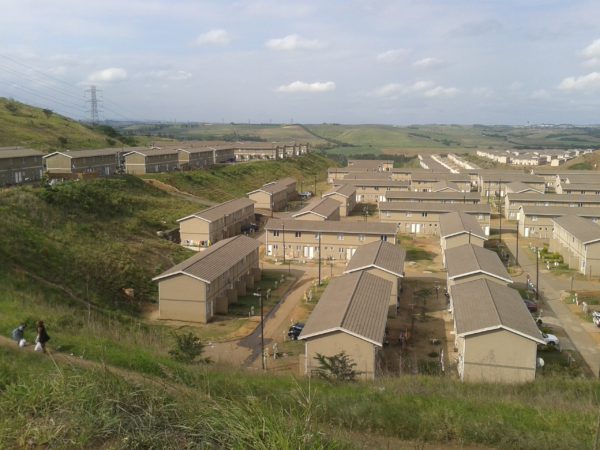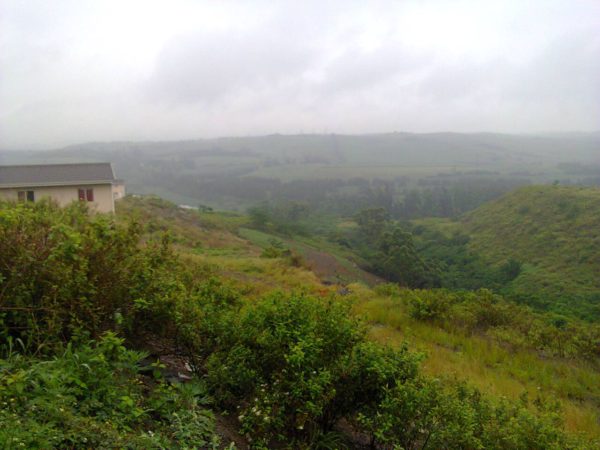Methodologies of the urban periphery: Defining and researching urban African peripheries
In this blog Paula Meth, one of the Principal Investigators of the project Living the Urban Periphery: Investment, Infrastructure and Economic Change in African City-Regions, a comparative study of peri-urban areas in South Africa and Ethiopia, outlines the progress of the research to date and some of the obstacles the team have encountered to date. Navigating the complex realities of these settlements through negotiation and improvisation, an interesting picture is already emerging of the unique dynamics at play – and the central role of the peripheries, despite their significant challenges, to growth and poverty reduction in developing cities.

The Living the Urban Periphery project has an ambitious aim, which is to compare how residents in the peripheries of three city-regions in Africa experience everyday life and how these lives are shaped and transformed by investment – particularly infrastructural – into these areas by the state, private sector and individuals. The particular Urban Transformation call that provided our funding focused on urban changes occurring in South Africa, with the encouragement to compare with another African context – we chose Ethiopia – a choice that is exciting in terms of urban transformation but also quite challenging to research under current political conditions. Within these two countries, we are focusing on three city-regions (Gauteng, eThekwini, and Addis Ababa), with a phased approach so that we learn from some of the experiences and challenges in each city before commencing research on the next.
Partly because of the project team’s own expertise, we’ve decided to focus on housing and transport, but we’re also keen to understand economic changes (growth and decline) that might be occurring in peripheral areas of these city-regions. To make the project tangible we’ve chosen seven case study sites across the three city-regions for detailed analysis and we’re using a mix of different types of methods of data collection to provide us with varying sorts of information about the case study areas. These include: interviews, solicited diaries and auto-photography with residents, interviews with key informants, surveys with residents (managed by a survey company), mapping and statistical data, and policy and grey literature.
Research proposals are always a wish list until the hard reality of carrying out research is confronted. I’ll go on to mention a few challenges we’ve faced as well as some of the high points and focus then on the difficulties of case study selection and reflect on what this reveals for doing comparative research, as well as for the intellectual arguments of our overall project.
A first challenge for us was managing our work and project initiation over different continents, separate universities and differing systems of taxation, employment contracting and university admin support. In short, hiring post-doc researchers to work on the other side of the world is not easy and we experienced some delays because of this. On a positive note, we had no shortage of fantastic, well-qualified applicants, and our final team is excellent.
A further difficulty was a delay in setting up contracts with survey companies and this has had a particular methodological impact in that our first and second case studies have proceeded with qualitative data collection prior to survey data collection – in contrast to our original aims of using surveys to identify willing participants. Other issues we’ve experienced relate to gatekeepers influencing who we’ve been able to access, and this was a particular problem in our first case study in eThekwini, where strong local political party leadership funnelled our researchers towards their loyal party members. We’ve worked to overcome the inevitable challenges this presents, but given that we’d hoped to work with local residents and organisations to add legitimacy to our project, it raises questions for us about how we manage stakeholder events and seeking ‘buy-in’ prior to commencing research, and just how possible it is to really sample across political and other divides. Further challenges will inevitably await as we seek to get the Addis Ababa research under way.
In our first and second case (in eThekwini), a further issue is that certain groups of residents, in particular those who might be classified as middle-income, have so far proved less willing to participate in diary writing or interviewing – meaning that there is potential for our data to over-represent the urban poor, in direct contrast to our original aims which was to understand the lives of all residents living in particular peripheral areas. Accessing and understanding how difference is experienced is hard if those who are different don’t want to talk! This complicates our work but has also proved productive, as we’ve had to devise different and contextually particular methods to access these different groups, including reliance on social media.

More positively we are now reaping the benefits of a carefully crafted methodological approach and as our diary and interview transcripts are being uploaded and reviewed, the depth of residents’ stories and experiences is humbling, and so too are the insights gained from various key informants. We can already see real connections across data types, and residents’ auto-photography provides us with critical illustrations of sometimes hard to capture sights.
The real methodological ‘entertainment’ so far has been reserved for case selection. Luckily we get on as a team and luckily we all feel able to put forward views on what we believe would make a good case. We have had techniques to aid us, obviously. We have criteria, which we carefully debated and devised at proposal stage, as well as post-project commencement. We have used feedback and advice from stakeholder events, and from our international advisory panel. We’ve carried out drive-arounds to assess the viability and relevance of various cases, supported by interviews with planners and government officials, statistical and mapping analyses and the drafting of mini-reports. We’ve debated just how comparable cases need to be in order for us to arrive at sensible and original conclusions, asking in essence what does comparison mean and what is it for?
But, put simply, in geographical terms, the periphery of any city-region is vast and pinpointing which bit to focus on is not easy. Should we choose areas where a lot of prior research has already occurred, what are the advantages or disadvantages of this and how best to weigh this up? Should cases be similar or vastly distinct? Should all areas have specific investments in housing and transport, or only some, and how broadly do you draw the boundaries around cases? Moving beyond mere geographic rationales, more precisely what do we mean by periphery and what is the periphery of a city-region? One could write a PhD on this question and it certainly formed an important element of our original proposal. Peripheries and city-regions as concepts don’t have their necessary equivalence in urban governance structures: they don’t match municipal and local authority jurisdictions. In the context of the Gauteng city-region, we’ve had to distinguish between the edges of Johannesburg and the edges of the other municipalities that make up the wider region of Gauteng, and this has meant that one of our cases is actually not that peripheral to Gauteng, but is for Johannesburg. After considerable deliberation we have chosen five cases in South African cities that reflect very different edge conditions but which are already suggesting fascinating material.
As data is produced, including about some poorly researched areas, the complexity of lives on the periphery is certainly pointing to the salience of our methodological choices. We will have case material which speaks to a wide range of urban experience and not simply some idealised peri-urban vision. We can show that the peripheries are sites of contradiction, where growth occurs alongside the creation of new inequalities and dynamic change takes place despite frustrating declines in services for some. In short, we are recording and making sense of urban transformations, spanning both the very local detailed qualitative insights and regional level understandings of economic, demographic and political change. The often overlooked peripheries are coming into view, their role in urban change and potential for reducing urban poverty revealed. Comparative studies across quite different contexts is increasingly encouraged in qualitative urban research: our experience shows that it’s not straightforward but that the methodological deliberations we feel it demands can be highly productive in generating useful, deep and rich material.